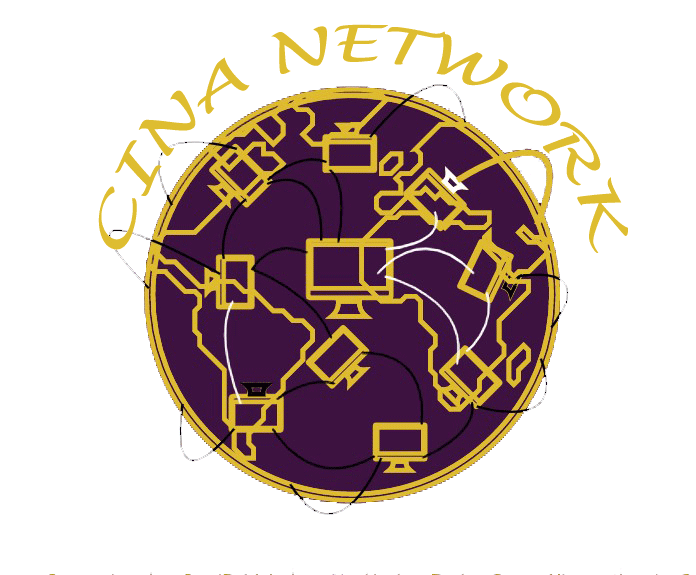نوع آموزش: آفلاین
هوش تهدید سایبری | SANS FOR578: Cyber Threat Intelligence

پشتیبانی: تیکتینگ
ارائه مدرک: ندارد
زبان آموزش:
فارسی/ انگلیسی
(طبق توضیحات)
بازگشت وجه:
طبق قوانین سایت
قیمت
- FOR578.1: Cyber Threat Intelligence and Requirements
- Case Study: MOONLIGHT MAZE
- Understanding Intelligence
- Intelligence Lexicon and Definitions
- Traditional Intelligence Cycle
- Richards Heuer, Jr., Sherman Kent, and Intelligence Tradecraft
- Structured Analytical Techniques
- Case Study: Operation Aurora
- Understanding Cyber Threat Intelligence
- Defining Threats
- Understanding Risk
- Cyber Threat Intelligence and Its Role
- Expectation of Organizations and Analysts
- Diamond Model and Activity Groups
- Four Types of Threat Detection
- Threat Intelligence Consumption
- Sliding Scale of Cybersecurity
- Consuming Intelligence for Different Goals
- Enabling Other Teams with Intelligence
- Positioning the Team to Generate Intelligence
- Building an Intelligence Team
- Positioning the Team in the Organization
- Prerequisites for Intelligence Generation
- Planning and Direction (Developing Requirements)
- Intelligence Requirements
- Priority Intelligence Requirements
- Beginning the Intelligence Lifecycle
- Threat Modeling
- FOR578.2: The Fundamental Skillset: Intrusion Analysis
- Primary Collection Source: Intrusion Analysis
- Intrusion Analysis as a Core Skillset
- Methods to Performing Intrusion Analysis
- Intrusion Kill Chain
- MITRE ATT&CK
- Diamond Model
- Kill Chain Courses of Action
- Passively Discovering Activity in Historical Data and Logs
- Detecting Future Threat Actions and Capabilities
- Denying Access to Threats
- Delaying and Degrading Adversary Tactics and Malware
- Kill Chain Deep Dive
- Scenario Introduction
- Notification of Malicious Activity
- Pivoting Off of a Single Indicator to Discover Adversary Activity
- Identifying and Categorizing Malicious Actions
- Using Network and Host-Based Data
- Interacting with Incident Response Teams
- Interacting with Malware Reverse Engineers
- Effectively Leveraging Requests for Information
- Handling Multiple Kill Chains
- Identifying Different Simultaneous Intrusions
- Managing and Constructing Multiple Kill Chains
- Linking Related Intrusions
- Extracting Knowledge from the Intrusions for Long-Term Tracking
- FOR578.3: Collection Sources
- Case Study: HEXANE
- Collection Source: Malware
-
- Data from Malware Analysis
- Key Data Types to Analyze and Pivot On
- VirusTotal and Malware Parsers
- Identifying Intrusion Patterns and Key Indicators
-
- Collection Source: Domains
- Domain Deep Dive
- Different Types of Adversary Domains
- Pivoting Off of Information in Domains
- Case Study: GlassRAT
- Collection Source: External Datasets
-
- Building Repositories from External Datasets
- Open-Source Intelligence Collection Tools and Frameworks
-
- Collection Source: TLS Certificates
- TLS/SSL Certificates
- Tracking New Malware Samples and C2 with TLS
- Pivoting off of Information in TLS Certificates
- Case Study: Trickbots
- FOR578.4: Analysis and Production of Intelligence
- Storing Threat Data in MISP
- Identifying Types of Biases
- Analysis of Competing Hypotheses
- Visual Analysis in Maltego
- The Rule of 2 and Threat Groups
Topics
- Case Study: Human-Operated Ransomware
- Exploitation: Storing and Structuring Data
- Storing Threat Data
- Threat Information Sharing
- MISP as a Storage Platform
- Analysis: Logical Fallacies and Cognitive Biases
- Logical Fallacies
- Cognitive Biases
- Common Cyber Threat Intelligence Informal Fallacies
- Analysis: Exploring Hypotheses
- Analysis of Competing Hypotheses
- Hypotheses Generation
- Understanding and Identifying Knowledge Gaps
- Analysis: Different Types of Analysis
- Visual Analysis
- Data Analysis
- Temporal Analysis
- Case Study: Panama Papers
- Analysis: Clustering Intrusions
- Style Guide
- Names and Clustering Rules
- ACH for Intrusions
- Activity Groups and Diamond Model for Clusters
- Style Guide
- Names and Clustering Rules
- ACH for Intrusions
- Activity Groups and Diamond Model for Clusters
- FOR578.5: Dissemination and Attribution
- Developing IOCs in YARA
- Working with STIX
- Building a Campaign Heatmap
- Analysis of Intelligence Reports
- Building an Attribution Intelligence Model
Topics
- Logical Fallacies and Cognitive Biases
- Identifying and Defeating Bias
- Logical Fallacies and Examples
- Common Cyber Threat Intelligence Informal Fallacies
- Cognitive Biases and Examples
- Dissemination: Tactical
- Understanding the Audience and Consumer
- Threat Data Feeds and Their Limitations
- YARA
- YARA Concepts and Examples
- Dissemination: Operational
- Different Methods of Campaign Correlation
- Understanding Perceived Adversary Intentions
- Leveraging the Diamond Model for Campaign Analysis
- STIX and TAXII
- Government and Partner Collaboration
- Dissemination: Strategic
- Report Writing Pitfalls
- Report Writing Best Practices
- Different Types of Strategic Output
- Case Study: APT10 and Cloud Hopper
- A Specific Intelligence Requirement: Attribution
- Identifying and Remedying New Intelligence Requirements
- Tuning the Collection Management Framework
- Types of Attribution
- Building an Attribution Model
- Conducting Attribution Assessments
- Case Study: Lazarus Group
- FOR578.6: Capstone
همه متخصصان امنیتی باید برای تقویت مهارت های تحلیلی خود در FOR578 شرکت کنند. این دوره بر خلاف هر آموزش فنی دیگری است که تا به حال تجربه کرده اید. به منظور ایجاد یک پایه محکم برای هر مجموعه مهارت امنیتی و تقویت مهارت های موجود، بر تجزیه و تحلیل ساختاریافته تمرکز می کند. این دوره به پزشکان از سراسر طیف امنیتی کمک می کند:
- Develop analysis skills to better comprehend, synthesize, and leverage complex scenarios
- Identify and create intelligence requirements through practices such as threat modeling
- Understand and develop skills in tactical, operational, and strategic-level threat intelligence
- Generate threat intelligence to detect, respond to, and defeat focused and targeted threats
- Learn the different sources to collect adversary data and how to exploit and pivot off of those data
- Validate information received externally to minimize the costs of bad intelligence
- Create Indicators of Compromise (IOCs) in formats such as YARA and STIX/TAXII
- Understand and exploit adversary tactics, techniques, and procedures, and leverage frameworks such as the Kill Chain, Diamond Model, and MITRE ATT&CK
- Establish structured analytical techniques to be successful in any security role
معمول است که متخصصان امنیت خود را تحلیلگر می نامند. اما چند نفر از ما به جای شرکت در آموزش فنی، آموزش تحلیل ساختار یافته را گذرانده ایم؟ هر دو مهم هستند، اما به ندرت تحلیلگران بر آموزش روش های تحلیلی تفکر تمرکز می کنند. این دوره، تحلیلگران را در معرض ذهنیتها، روشها و تکنیکهای جدید قرار میدهد تا دانش موجود خود را تکمیل کند و به آنها کمک کند بهترین شیوههای جدید را برای تیمهای امنیتی خود ایجاد کنند. مهارت های تحلیل مناسب کلید دنیای پیچیده ای است که مدافعان روزانه در معرض آن هستند.
تجزیه و تحلیل قصد، فرصت و توانایی دشمن برای آسیب رساندن به عنوان اطلاعات تهدید سایبری شناخته می شود. هوش یک خوراک داده نیست و نه چیزی است که از یک ابزار به دست می آید. هوش اطلاعاتی قابل اجرا است که به شکاف های دانش کلیدی، نقاط دردناک یا الزامات سازمان می پردازد. این مجموعه، طبقهبندی و بهرهبرداری از دانش در مورد دشمنان، به مدافعان دست برتر را در برابر دشمنان میدهد و مدافعان را مجبور میکند تا با هر نفوذ بعدی که با آن مواجه میشوند، یاد بگیرند و تکامل یابند.
بنابراین اطلاعات تهدید سایبری نشان دهنده یک افزایش دهنده نیرو برای سازمان هایی است که به دنبال ایجاد یا به روز رسانی برنامه های پاسخ و شناسایی خود برای مقابله با تهدیدهای پیچیده تر هستند. بدافزار ابزار دشمن است، اما تهدید واقعی تهدید انسانی است و اطلاعات تهدیدات سایبری بر مقابله با این تهدیدات انسانی انعطافپذیر و پایدار با مدافعان انسانی قدرتمند و آموزشدیده تمرکز میکند.
دانش در مورد دشمن هسته اصلی همه تیم های امنیتی است. تیم قرمز باید روش های حریفان را درک کند تا بتواند از مهارت های تجاری آنها تقلید کند. مرکز عملیات امنیتی باید بداند که چگونه نفوذها را اولویت بندی کند و به سرعت با مواردی که نیاز به توجه فوری دارند مقابله کند. تیم واکنش به حادثه نیاز به اطلاعات عملی در مورد نحوه بررسی سریع و واکنش سریع به نفوذهای هدفمند دارد. گروه مدیریت آسیبپذیری باید بداند که کدام آسیبپذیری برای اولویتبندی و خطری که هر کدام از آنها ارائه میکند، مهمتر است. تیم شکار تهدید باید رفتارهای دشمن را درک کند تا تهدیدات جدید را جستجو کند.
به عبارت دیگر، اطلاعات تهدیدات سایبری همه اقدامات امنیتی را که با دشمنان سروکار دارند، آگاه می کند. FOR578 تیم امنیتی شما و سازمان شما را با سطح مهارتهای اطلاعاتی تهدیدات سایبری تاکتیکی، عملیاتی و استراتژیک و مهارتهای تجاری مورد نیاز برای درک بهتر چشمانداز تهدید در حال تحول و مقابله دقیق و مؤثر با آن تهدیدها خواهد بود.
- کارشناسان مرکز عملیات امنیت (SOC)
- کارشناسان واحد پاسخگویی به حوادث (IR)
- افراد علاقمند به گرایش فارنزیک
- نفوذگرهای حرفه ای (جهت پاک کردن رد پا)
آشنایی با یکی از دوره های زیر لازم میباشد:
- SEC401 – Security Essentials Bootcamp Style
- SEC511 – Continuous Monitoring and Security Operations
- FOR508 – Advanced Digital Forensics, Incident Response & Threat Hunting
- FOR572 – Advanced Network Forensics
- FOR526 – Memory Forensics In-Depth
- FOR610 – REM: Malware Analysis
حجم فایل ها
برای استفاده
قیمت


Reviews
There are no reviews yet.